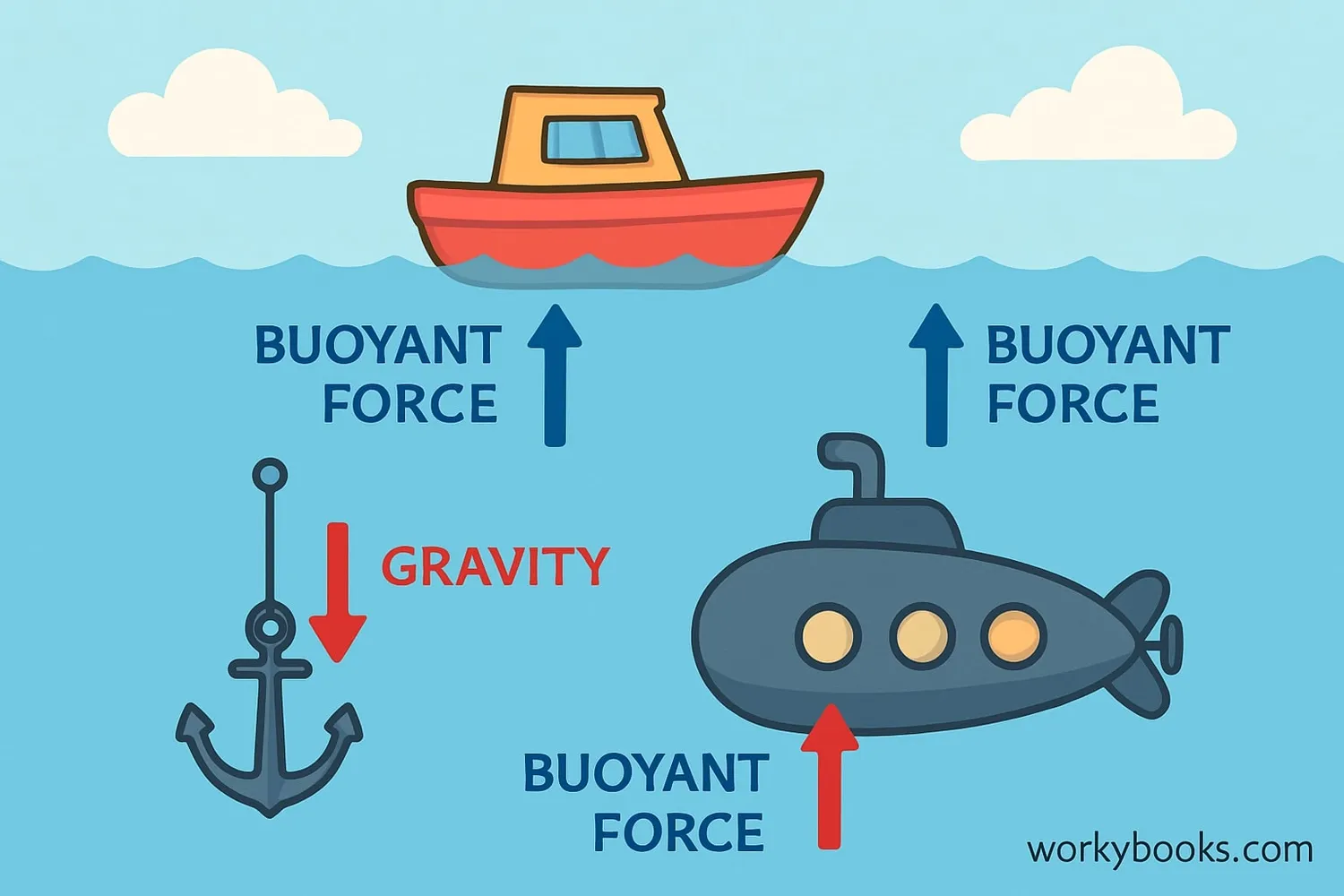Archimedes' Principle - Definition, Examples, Quiz, FAQ, Trivia
Discover why objects float and how buoyancy works!
What is Archimedes' Principle?

Archimedes' Principle is a scientific law that explains why objects float or sink in fluids (liquids or gases). It was discovered by the ancient Greek scientist Archimedes over 2,000 years ago.
The principle states: "The upward buoyant force on an object immersed in a fluid is equal to the weight of the fluid that the object displaces."
In simpler terms: When you place an object in water, it pushes aside (displaces) some water. The water pushes back with a force (buoyant force) equal to the weight of the water that was displaced. This force determines whether an object floats or sinks!
Fun Fact!
Archimedes discovered this principle while taking a bath! He was so excited that he ran naked through the streets shouting "Eureka!" meaning "I found it!"
How Buoyancy Works

Buoyancy depends on the relationship between two forces:
1. Gravity pulling the object downward
2. Buoyant force pushing the object upward
Here's what determines whether an object floats, sinks, or stays suspended:
Floating
Object floats when buoyant force is greater than its weight
Sinking
Object sinks when its weight is greater than buoyant force
Neutral Buoyancy
Object stays suspended when forces are equal
The key factor is density - how much mass is packed into a certain volume. Objects less dense than water float, while objects more dense than water sink.
Apparent weight is what we feel when lifting an object underwater. It's the actual weight minus the buoyant force.
Density Matters!
A steel ship floats because its shape displaces enough water to create a buoyant force greater than its weight, even though steel is denser than water!
Why Archimedes' Principle is Important

Archimedes' Principle has countless applications in our daily lives and modern technology:
Ship Design
Helps engineers design ships that can carry heavy loads without sinking
Submarines
Allows submarines to control their depth by changing buoyancy
Hot Air Balloons
Explains how balloons float in air by displacing heavier air
Other important applications:
• Hydrometers measure liquid density
• Life jackets provide extra buoyancy
• Swimming techniques use buoyancy principles
• Geology studies of Earth's crust floating on magma
Understanding buoyancy helps us design better transportation, conduct scientific research, and even enjoy water sports safely!
Buoyancy Quiz
Test your knowledge of Archimedes' Principle with this quiz! Answer all 5 questions to see how much you've learned.
Frequently Asked Questions
Here are answers to some common questions about Archimedes' Principle:
Fun Buoyancy Trivia
Discover some amazing facts about buoyancy and Archimedes' Principle:
Titanic Buoyancy
The Titanic displaced about 52,000 tons of water when it was floating. That's equal to the weight of about 10,000 elephants!
Fish Bladders
Many fish control their buoyancy using a swim bladder - an air-filled organ they can inflate or deflate to rise or sink in water without swimming.
Deep Dive
The deepest diving submarine can go down 10,916 meters (35,813 feet) - that's deeper than Mount Everest is tall! It uses buoyancy control to navigate these extreme depths.
Sky High
The largest hot air balloon ever made was 260 feet tall - taller than a 25-story building! It could lift over 16,000 kg (35,000 lbs) because of buoyancy in air.


